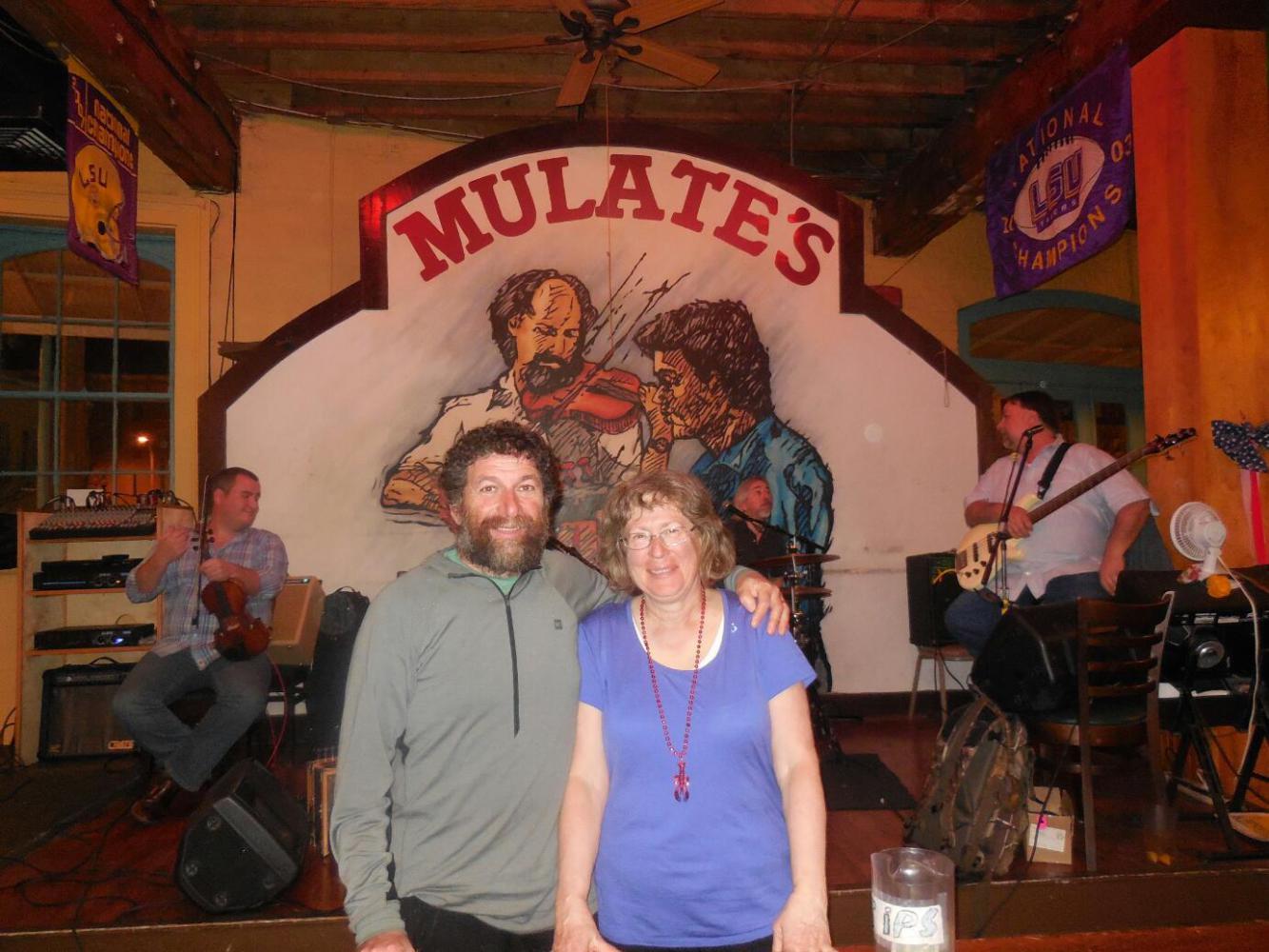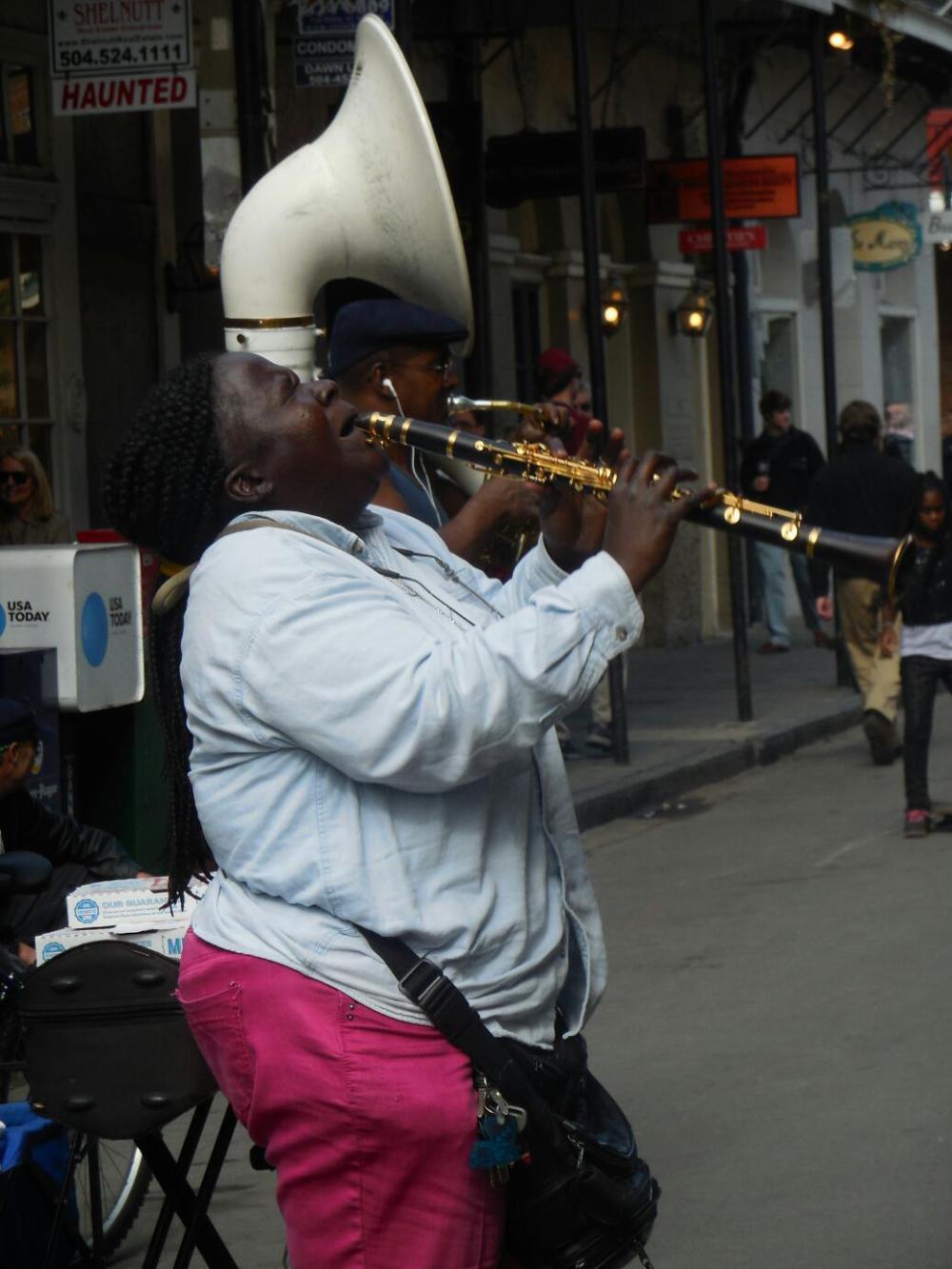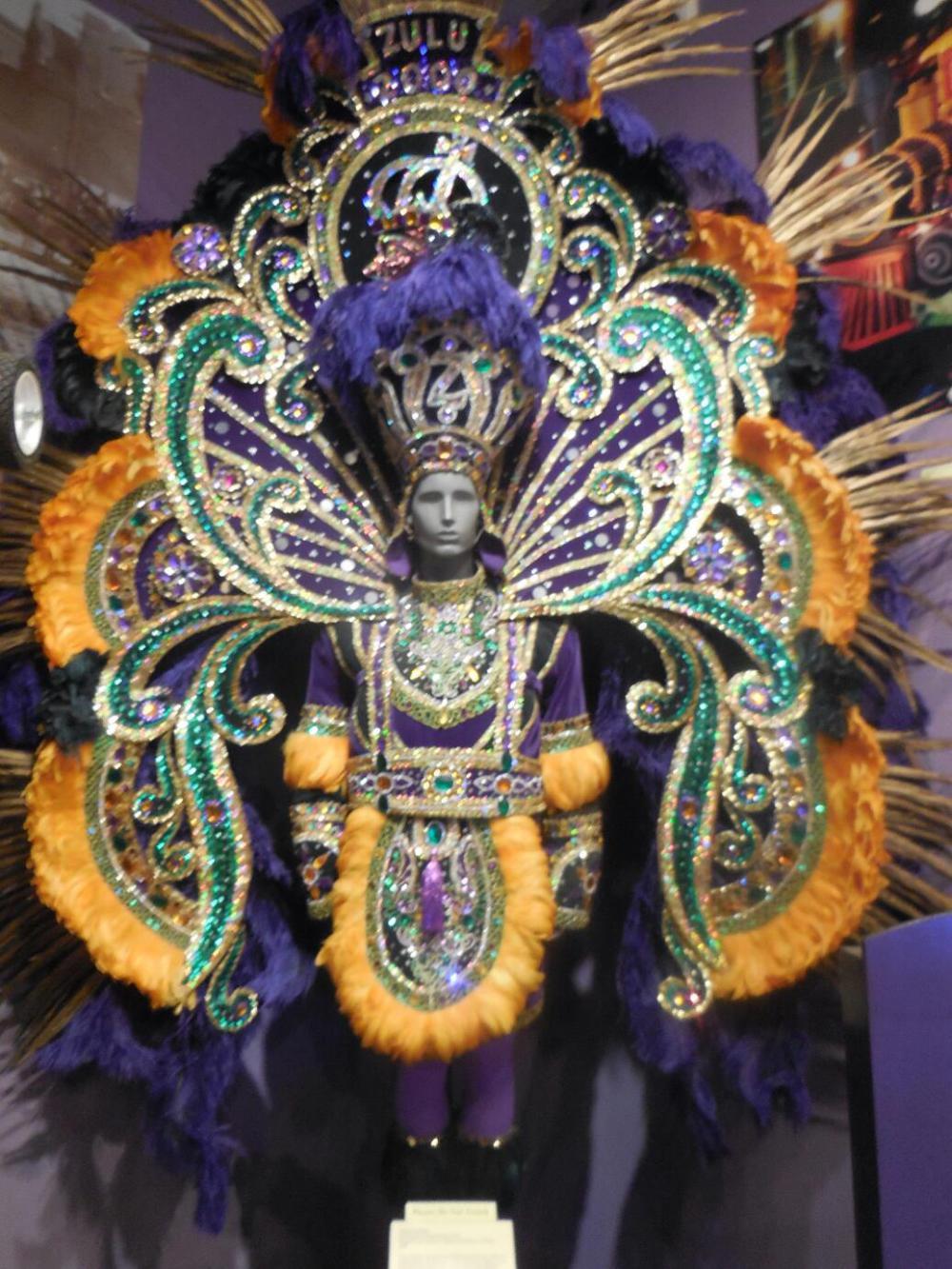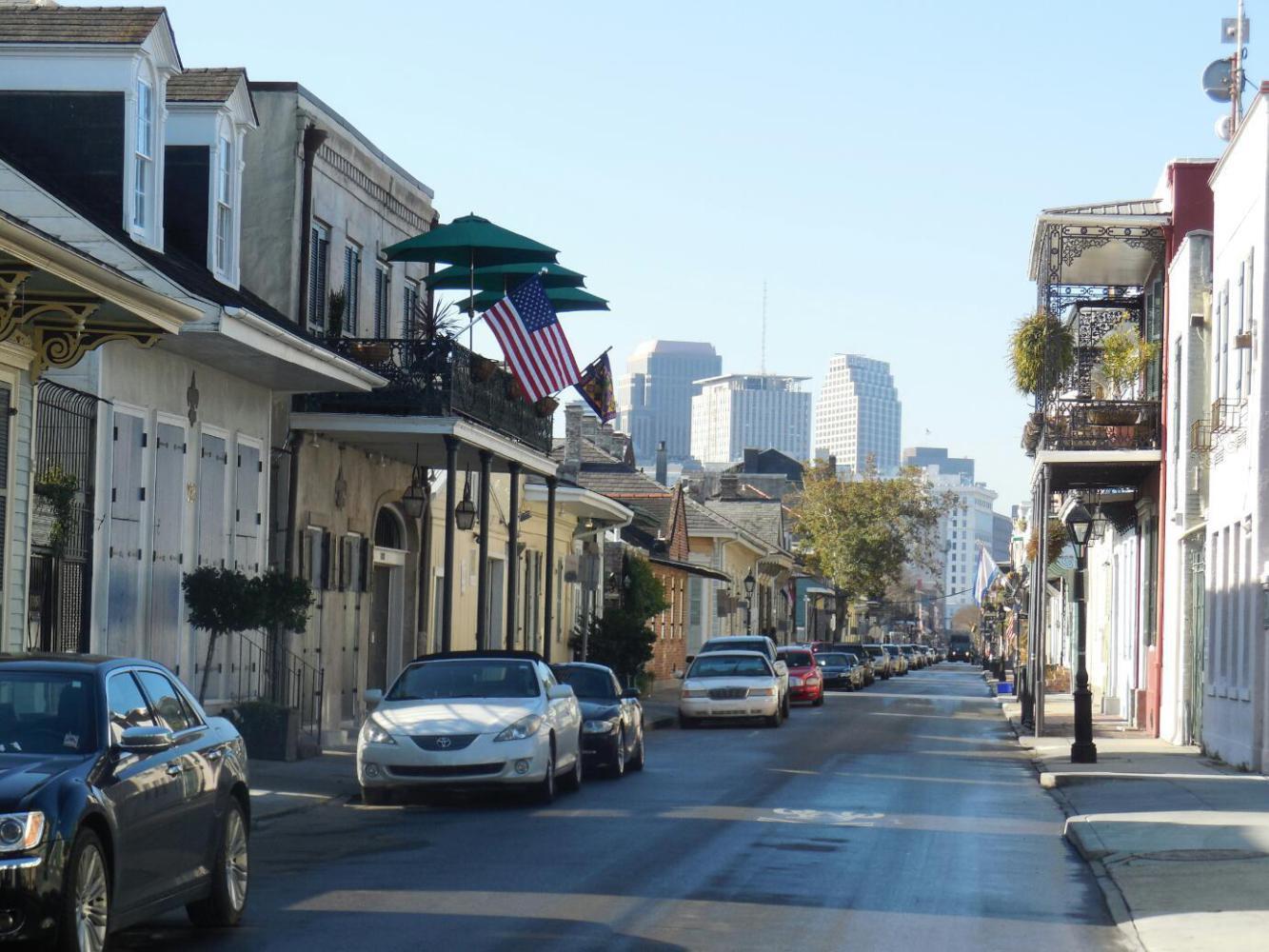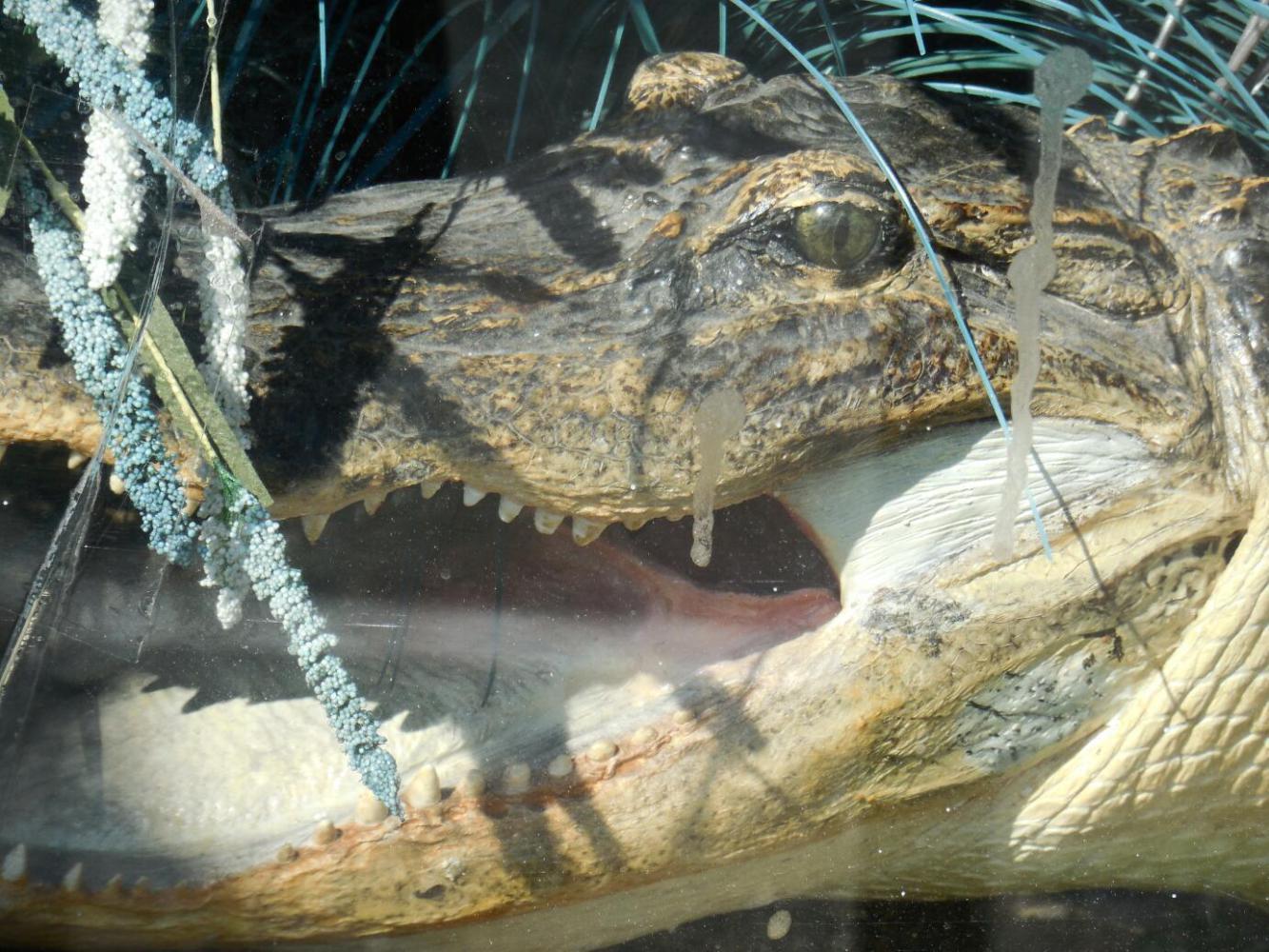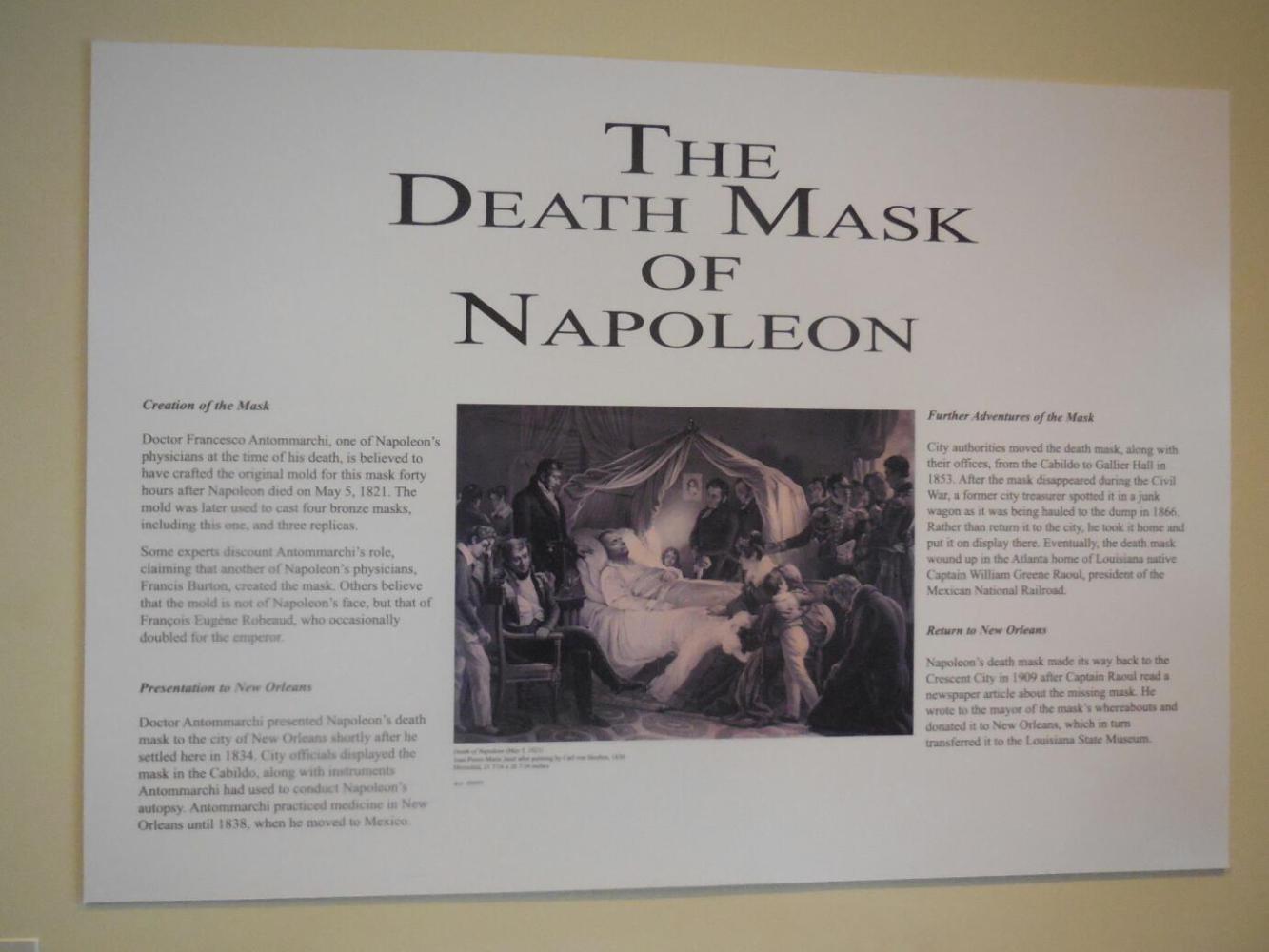February 8, 2014
Day 35: New Orleans
Last night's quick run around the French Quarter did give us some idea about the place, but now after a whole day we have a more complete picture. Last night we saw a quiet mostly car free enclave of interesting wooden houses, plus a large but empty beignet shop. Today, oh my, we are trying to make sense of the sensory and information overload, and not to mention sort and select some of 236 photos and six movies we took.
First, about the place physically. The French Quarter comprises about six dozen square blocks being about 12 along the Mississippi River by 6 deep. Within this small area there are different sub- neighbourhoods. There are the quiet little houses, yes, but also an eight block long market area, an historic cathedral, two or more historic buildings with extensive museum displays, the bar scene of Bourbon street, and the street music scene everywhere, but notably on the pedestrian mall area of Royal Street. Within this there is even more to absorb. For example the Cabildo museum alone has displays covering at least thirteen subjects. Maybe we'll get to that.
About the place in terms of what makes it so unique (other than the streets and places). First, like other famous places that draw a lot of tourists, the tourists themselves produce a spectacle, and the zillions of souvenir shops make up a certain, sometimes large, part of the whole thing. Waikiki, for example, does have a bit of a beach, but the rest is tourists and tourists looking at tourists. That is not really, exactly, the case in New Orleans. From what we have seen, New Orleans French Quarter is about:
Creole cooking, and other good food Jazz and street music Unique racial/cultural mix Praline and related chocolate Mardi Gras A cultural sense of freedom - to dress funny, to party Yes, the buildings .... and two touristy and a bit distant things
Gators Voodoo and ghosts
Plus, Katrina and other hurricanes - which did not affect the French Quarter as a disaster, but because it came to the very doorstep, is always in the background.
In making this list, to be fair, we should add that it refers to what we saw in the French Quarter. We got to drive through the main city a bit in the evening, but we have no idea what that huge entity is all about.
Usually we set out a day's story pretty much in the order it happened. But for today, we can only make sense of it by using topics, like those listed above. So here we go!
(Please note: there are 87 photos for this page At the time I am typing this bit - one day later - they have been captioned and moved under their proper topics, but they are still not in the best order. Maybe soon. We also shot some short movies of music on the street and at Mulate's. Maybe soon those will get posted too. So if you are interested in New Orleans, check for updates to this page.
FOOD
The lovely staff at the hotel assured us that the continental breakfast offered was not standard motel, but really good. They were partly right. Breakfast did include things like cheese and ham slices. But still, this sure is not France or Germany. Our hotel is right on the border of the French Quarter, not right in it. Maybe that's why the food was only partially ok. On the other hand, when we walked into the quarter a half block, we hit the Croissant d'Or, and were back in Europe. By contrast, just 1/8 block away from our hotel and away from the French Quarter is a handimart where Little Debbie lurks and you can not even get hot chocolate.
We bypassed another visit to Cafe du Monde. We were spoiled by the great beignet at Joe Patti, so the ones here lost their appeal. On the way to not stopping at Cafe du Monde we walked through the French Market. Have a look at some of the signs that hopefully are in the photos below, for some interesting food options, like gator.
One unique stall we passed billed itself as heart healthy and featured some Vegan items. We understand from Bill Waters in the Guestbook that finding a vegan choice in New Orleans is a pretty rare event.
Though we failed to try out a "Po Boy", we did go for a Mufaletta. The wikipedia description is very informative:
"A traditional style muffuletta sandwich consists of a muffuletta loaf split horizontally and covered with layers of marinated olive salad, mortadella, salami, mozzarella, ham, and provolone. The sandwich is sometimes heated to soften the provolone.[3] Quarter, half, and full-sized muffulettas are sold.
The signature olive salad consists of olives diced with the celery, cauliflower and carrot found in a jar of giardiniera, seasoned with oregano and garlic, covered in olive oil, and allowed to combine for at least 24 hours.
Olive salad is commercially produced for restaurants and for retail sale by vendors including the Boscoli Family, Rouses, Dorignacs, Franks, Roland Imported Foods, and Aunt Sally's.
The traditional way to serve the sandwich at Central Grocery is cold, but many vendors will toast. This was mentioned in the PBS special Sandwiches That You Will Like.
Origins
The muffuletta sandwich has its origins at the Central Grocery in the French Quarter of New Orleans.
According to Marie Lupo Tusa, daughter of the Central Grocery's founder, it was born when Sicilian farmers selling their produce at the nearby Farmers' Market would come into her father's grocery for lunch and order some salami, ham, cheese, olive salad, and either long braided Italian bread or a round muffuletta loaf. In typical Sicilian fashion they ate everything separately sitting on crates or barrels while precariously balancing their meals on their knees. Her father suggested cutting the bread and putting everything on it like a sandwich, even if it was not typical Sicilian fashion. The thicker braided Italian bread proved too hard to bite and the softer round muffuletta loaf won out. Shortly thereafter, farmers that came for lunch began merely asking for "muffulettas"."
Despite all this background, I found that he many seemingly flavourful ingredients not do their job, and the whole affair tasted mainly like a bland olive oil.
A very special cap to the day happened as Dave and Marieanne, a couple we met in Florida, took us into the city, to Mulate's, a Cajun restaurant and music/dance venue. There we found Boudin, a form of sausage, Cajun meat pies, blackened grilled chicken, and a rice side studded with sausage slices. This was all totally unlike the Creole things we had tried last night. It was not spicy, but super flavourful. Dave and Marieanne claim the boudin is superior up country, like at Mamou. We hope to check on that!

| Heart | 0 | Comment | 0 | Link |

| Heart | 0 | Comment | 0 | Link |

| Heart | 0 | Comment | 0 | Link |

| Heart | 0 | Comment | 0 | Link |
MUSIC
Some Canadian towns have street musicians, and many are very good. But generally the street is a training ground, a place people play until they can land some indoor gigs. Today we did not find any indoor music. But where it was all happening was the street. It was not just that there were a lot of street musicians, it was that the music of the place is in the street. We felt many of the people we heard were IT, the real thing, the true New Orleans music. Generally we would call the genre in our unschooled way "jazz". The most common instruments would be the clarinet, saxophone, tuba, and perhaps wash board.
This music was everywhere, but particularly near the cathedral in Jackson Square, and along Royal Street. It was not all jazz, though. For example, we listened also to a Balkan group.
What seemed to be missing, and a surprise and disappointment for us was the lack of any Cajun or Zydeco music.This is what we really wanted to hear, and it was nowhere. That's where David and Marieanne came to the rescue. They picked us up an drove to Mulate's. Mulate's claims to offer real Cajun music from real Cajun musicians, and it is true. We got to sit right by the stage, and can scarcely remember or imagine a more enjoyable evening. To us, the infectious rhythms of the fiddle and the squeezebox are wired directly to the pleasure centres of the brain.
Unfortunately, for me the wiring does not extend to the feet, and I never dance. But Dodie was able to get some instruction from Dave and the other experts there, notably Bill Weissborn, an older and longtime denizen of the place. With Bill's tutelage, Dodie earned her Cajun dancer's certificate!
Now our musical day was complete. We also came away with two original local CDs, one jazz, one Cajun.

| Heart | 0 | Comment | 0 | Link |

| Heart | 0 | Comment | 0 | Link |

| Heart | 0 | Comment | 0 | Link |

| Heart | 0 | Comment | 0 | Link |

| Heart | 0 | Comment | 0 | Link |

| Heart | 0 | Comment | 0 | Link |

| Heart | 0 | Comment | 0 | Link |

| Heart | 0 | Comment | 0 | Link |

| Heart | 0 | Comment | 0 | Link |

| Heart | 0 | Comment | 0 | Link |
RACIAL MIX
New Orleans' background includes people from France and Spain, Africa, the Caribbean, and Canada, as well as other places. So we see black people, who may perhaps be selling African crafts or masks, or we hear tell of voodoo, or Mardi Gras Krewes such as Zulu. We are not experienced enough to sort out who is who, beyond being able to notice if people have black skin. We have been warned that there is a problem of race and crime here, and we are sure it's true. But everyone we have spoken to, inside and outside of the French Quarter has been more than polite, they have been totally sweet.
One such person was Pleshete, who makes pralines in the New Orleans cooking School shop. At first I could not understand what she was saying, because of her accent. I asked here to talk to me some more, so I could try to decipher it and also enjoy listening to her. Pleshete is from here, though her parents originally came from Mississippi. She was not put off, offended, or bugged by my brash behaviour. Instead she was, yes, totally sweet!
Sure, Pleshete is not some young male hooligan in the ninth ward, so my story is a bit misleading. However there is no way I would receive such friendly treatment from a lady in, say, Switzerland.

| Heart | 0 | Comment | 0 | Link |

| Heart | 0 | Comment | 0 | Link |

| Heart | 0 | Comment | 0 | Link |
BUILDINGS
Aside from the small (but long) wooden houses, there are multi storey buildings here too. Typically these have balconies, with elaborate railings, usually decorated with mardi Gras colours.
We also have the St Louis Cathedral, billed as America's oldest, with a 280 year history, though the present building is from 1851. Inside, it looks just like a cathedral in France.
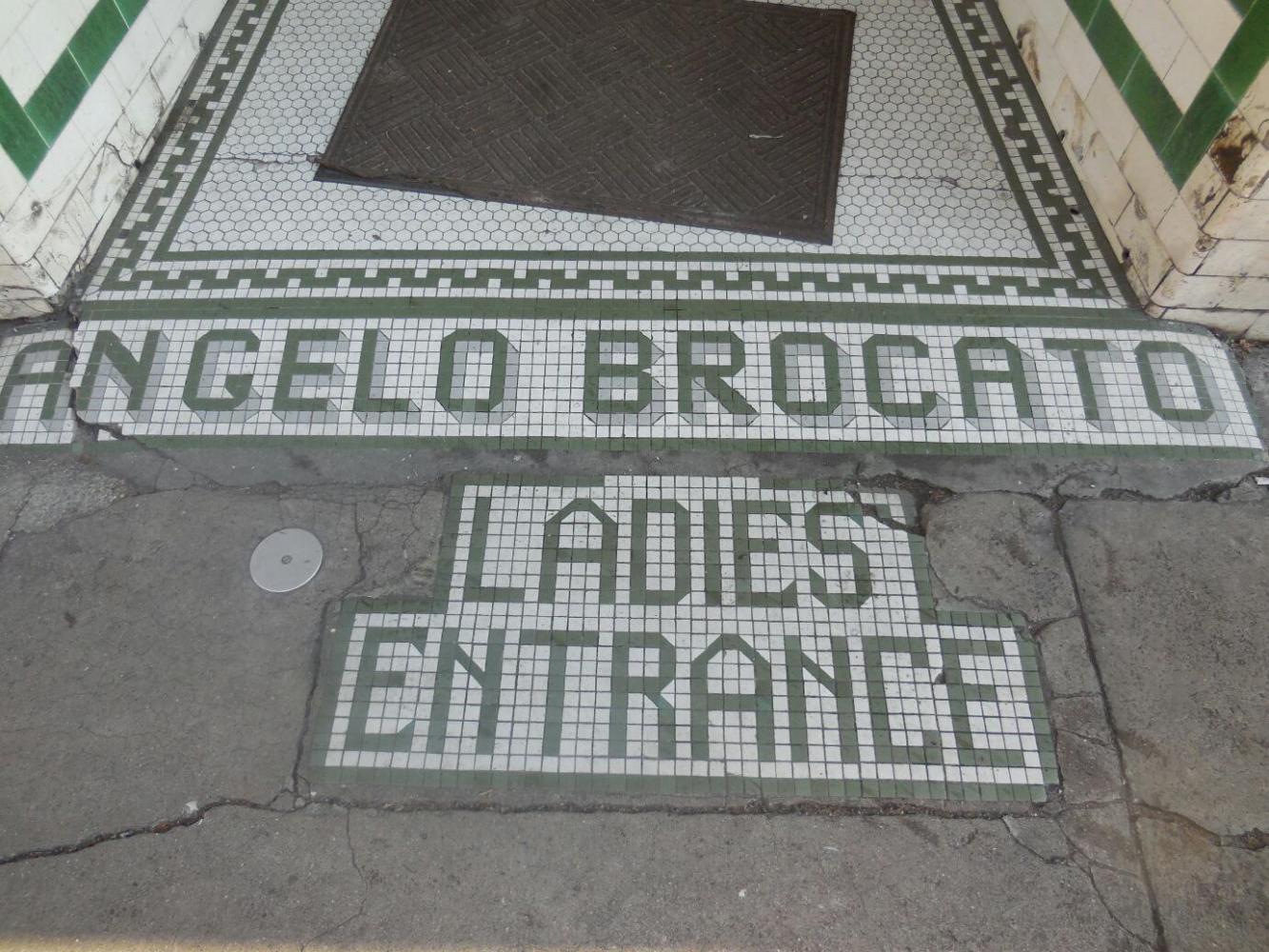
| Heart | 0 | Comment | 0 | Link |

| Heart | 0 | Comment | 0 | Link |

| Heart | 0 | Comment | 0 | Link |
GATORS
Sabrina writes that grandkids Amelia and Evee were only interested in the gators part of this blog. No gators, no willingness to be read any blog bits. so for Amelia and Evee, though we no longer are cycling by live gators, we have mustered a Gator Gallery from New Orleans. It's our best shot. Hope you like it, kids.
KATRINA
Though ytoyu can book Katrina tours from the French Quarter, there is no direct hurricane evidence here. However, the museum has a Katrina exhibit. While this has some coverage of what happened and what the winds and flooding were like, the main themes are the poor emergency response (titled Is This America?) and the Spirit of Resilience. People were left stranded in attics or on roofs or crowded into the Superdome or on I-10 overpasses, and many died there, even when the storm was well over. One bit that caught our attention was the story of the emergence of blue tarp clothing fashions. Blue tarps were a ubiquitous item brought by FEMA, the emergency measures agency.
Another bit was not in the museum but at a cheap souvenir shop. It is one of those dumb expressions you find on tourist tee shirts. But this one has a biting truth about looting.

| Heart | 0 | Comment | 0 | Link |
HISTORY
Louisiana started out as a Spanish area, along with Florida. It then passed to France and ultimately to the United States. the Cabildo museum covers the span of Lousiana history, touching on the native people, colonial life, the Lousiana Purchase, the Battle of New Orleans (defeat of the British, 1814) music, education, the slave trade, plantations (cotton and sugar), and civil war. We tried our best to absorb all this, but there is no way, not in one day, not in one week. Somebody put an immense amount of work into this!

| Heart | 0 | Comment | 0 | Link |

| Heart | 0 | Comment | 0 | Link |
OTHER STUFF
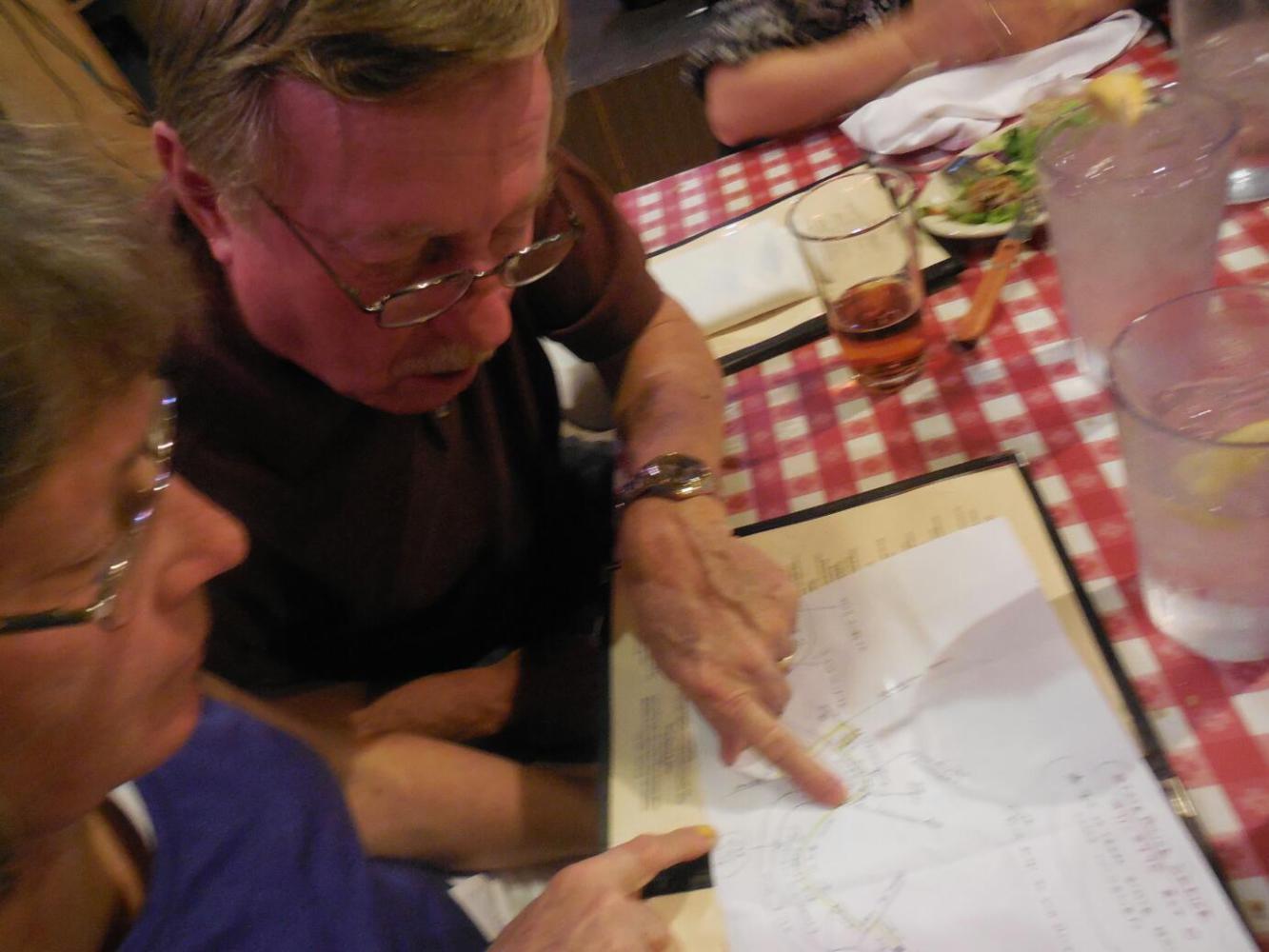
| Heart | 0 | Comment | 0 | Link |

| Heart | 0 | Comment | 0 | Link |

| Heart | 0 | Comment | 0 | Link |

| Heart | 0 | Comment | 0 | Link |
So there is a totally skimpy account of a day in New Orleans. The ACA route did not even provide for us to come here, yet it is clearly a highlight of the tour. We are glad we took the trouble to figure our way in here!
| Rate this entry's writing | Heart | 0 |
| Comment on this entry | Comment | 0 |

















